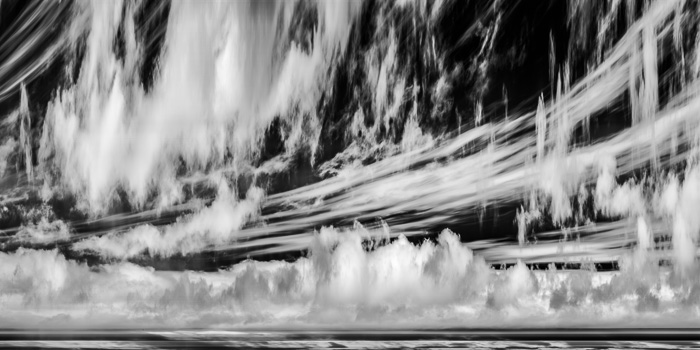Kim Weston is a talented photographer who specializes in nudes. He offers workshops both in the field and at Wildcat Hill, his history-rich house and studio, where his grandfather, Edward Weston, lived, worked, and made many of his famous images. Kim had a workshop over the weekend, and asked me to come by to show… [Read More]
Lightroom memory use vs file size
On a forum that I frequent, a poster made the assertion that Lightroom memory usage was not so much a matter of the number of pixels in the image, but of the number of bytes in the file. That didn’t make any sense to me. I figured that Lr, like Photoshop, would decompress any file… [Read More]
Some clouds that never were
Also in preparation for this weekend’s presentation, I found a slit-scan image that I’d liked previously. Since I told myself that I was only going to take fresh work, I looked it it with new eyes, and found something that I liked: Too romantic?
Another slit-scan sunset
While I was looking for the slit-scan sunset of yesterday’s and the day before’s post, I found one that I’d never printed: Here’s what it took to make it work: No Matlab work required. Also, note that I didn’t create that place in the center of the image where the sun brightened up.
Tweaking the slit-scan sunset image
I managed to restore the fog to the lower left corner of the sunset image in the last post. When I edited the first version, I used a Photoshop plug-in called Contrast Master to give the clouds some sock and pull up the details in the dark areas. That plug-in in no longer installed on… [Read More]
- « Previous Page
- 1
- …
- 236
- 237
- 238
- 239
- 240
- …
- 384
- Next Page »




